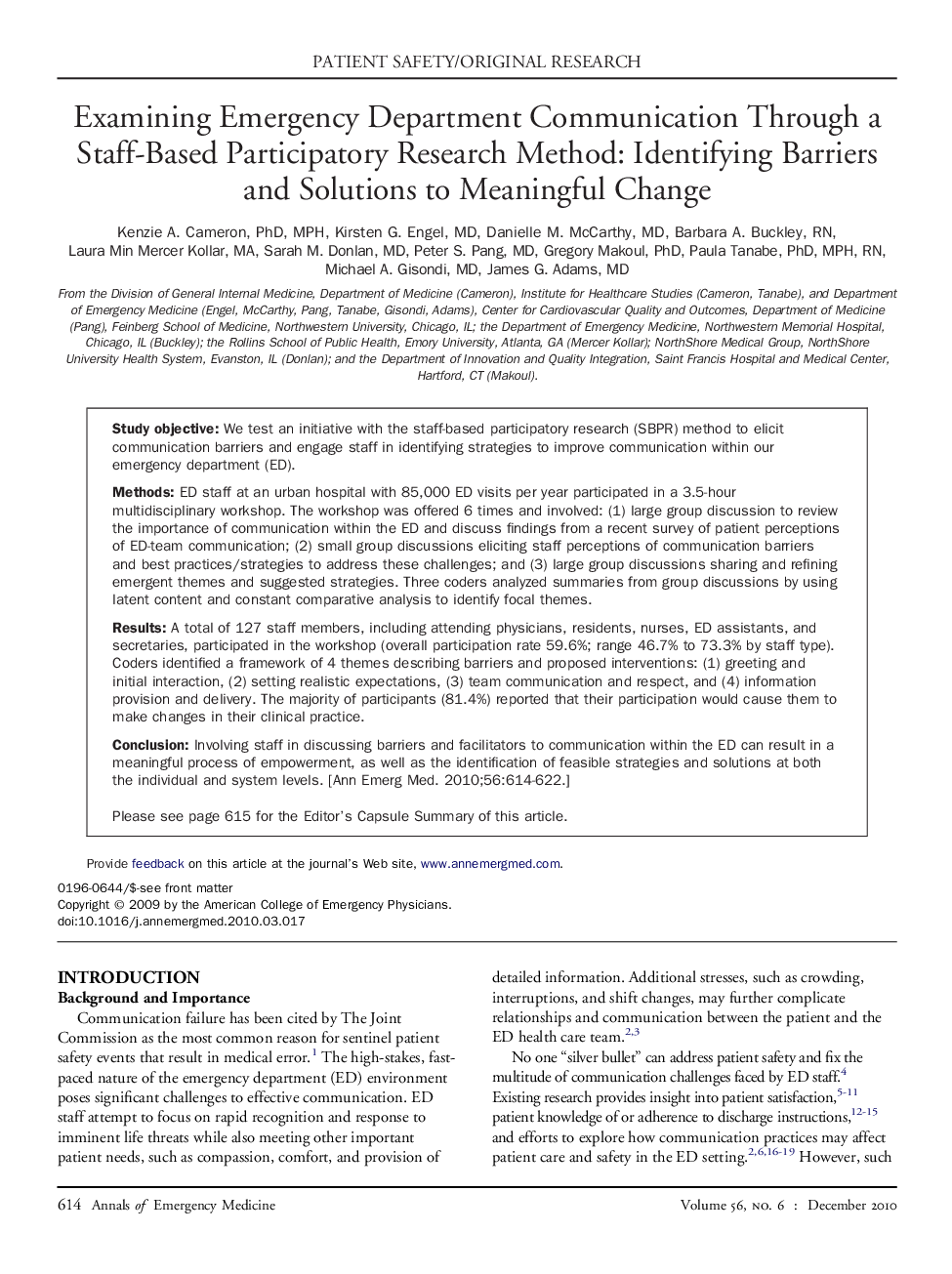| Article ID | Journal | Published Year | Pages | File Type |
|---|---|---|---|---|
| 3231279 | Annals of Emergency Medicine | 2010 | 9 Pages |
Study objectiveWe test an initiative with the staff-based participatory research (SBPR) method to elicit communication barriers and engage staff in identifying strategies to improve communication within our emergency department (ED).MethodsED staff at an urban hospital with 85,000 ED visits per year participated in a 3.5-hour multidisciplinary workshop. The workshop was offered 6 times and involved: (1) large group discussion to review the importance of communication within the ED and discuss findings from a recent survey of patient perceptions of ED-team communication; (2) small group discussions eliciting staff perceptions of communication barriers and best practices/strategies to address these challenges; and (3) large group discussions sharing and refining emergent themes and suggested strategies. Three coders analyzed summaries from group discussions by using latent content and constant comparative analysis to identify focal themes.ResultsA total of 127 staff members, including attending physicians, residents, nurses, ED assistants, and secretaries, participated in the workshop (overall participation rate 59.6%; range 46.7% to 73.3% by staff type). Coders identified a framework of 4 themes describing barriers and proposed interventions: (1) greeting and initial interaction, (2) setting realistic expectations, (3) team communication and respect, and (4) information provision and delivery. The majority of participants (81.4%) reported that their participation would cause them to make changes in their clinical practice.ConclusionInvolving staff in discussing barriers and facilitators to communication within the ED can result in a meaningful process of empowerment, as well as the identification of feasible strategies and solutions at both the individual and system levels.
